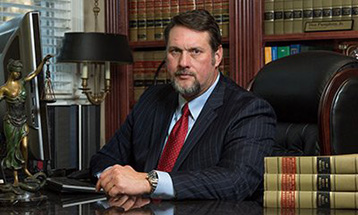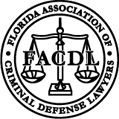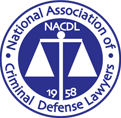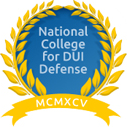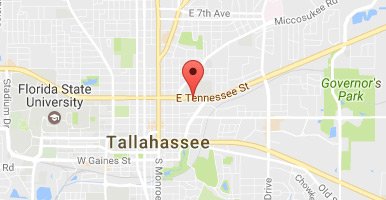- DUI
- Criminal Defense
- Florida DUI
- Traffic Offenses
- Drug Charges
- Marijuana Charges
- Violent Crimes
- Domestic Violence
- Temporary Injunctions
- Weapons Charges
- Theft Crimes
- White Collar Crime
- Juvenile Offenses
- Sex Crimes
- Violation of Probation
- Early Termination of Probation
- Seal or Expunge Criminal Record
- Criminal Appeals
- US Federal Offenses
- Misdemeanor Charges
- Felony Charges
- Co-Defendant Cases
- College Student Defense
- College Student Hearings
- FSU Students
- FAMU Students
- Florida Panhandle Arrests
- Extradition to Florida
- Bench Warrants / Warrants
- Emergency Bond Hearings
- Gambling Charges
- Drone Arrests
- Marsy’s Law
- UAS Infractions
- Introduction of Contraband
- Lying to Police
- Locations
- Case Results
- Our Firm
- Media
- Resources
- Blog
- Contact Us
Pros and Cons of Facial Recognition Used in Criminal Cases
September 4, 2023 Don Pumphrey, Jr. Criminal Defense Social Share
Facial recognition is a newer addition to modern technology that we use every day, such as with smartphones and smart technology, social media and apps, and national security.
In recent years, facial recognition technology has been used by law enforcement for identifying potential suspects or witnesses in criminal cases. The issue of facial recognition arises, however, with the potential threat it creates for violating civil liberties, making biased matches, or simply being inaccurate.
This blog post will define facial recognition and how it is used, explain different types used by law enforcement, the downside of facial recognition, along with an example case where a Florida defense attorney used facial recognition to get his client’s charges dropped.
What is Facial Recognition?
The term “facial recognition” means an automated or semi-automated process that:
- Assists in identifying, gathering information on, or otherwise generating surveillance information on a specific individual based on their physical appearance; or
- Logs the characteristics of an individual’s face, head, or body to infer emotion, associations, activities, or the location of a specific individual.
Facial recognition is analyzed through a biometric surveillance system. Congress defines a biometric surveillance system as any computer software program that performs facial recognition or other remote biometric recognition in real time or on a recording or photograph.
According to INTERPOL, facial recognition systems work by collecting images of faces which are submitted through a facial recognition system. The system measures specific facial characteristics, such as how far apart a person’s eyes are or the width of their nose. Once the facial image (probe image) is entered into the system, it is encoded by an algorithm and then compared to other facial profiles which were already stored. The resulting list will include a “candidate list” with the most likely matches.
Unlike with DNA fingerprints, a facial recognition system must take the following factors into account:
- Aging
- Plastic surgery
- Effects of drug, alcohol, or smoking abuse
- Cosmetics
- Pose of the subject
According to a Sun Sentinel article, police can collect images of individuals from any of the following sources:
- Ring doorbell cameras
- Private or public security cameras
- Social media platforms
- Police smartphones
- Automated license plate readers
- Body cameras
The following lists examples of facial recognition systems:
- IFRS – The INTERPOL Face Recognition System (IFRS) uses facial images from over 179 countries to make a global criminal database. IFRS is coupled with a biometric software application to help identify or verify an individual by comparing and analyzing patterns, shapes, and proportions of facial features and contours.
- Clearview AI – Clearview AI uses a web-based intelligence platform for law enforcement to help generate high-quality investigative leads through their database of 30+ billion facial images sourced from public-only web sources including news media, mugshot websites, public social media, and other open sources.
- FACES – The Face Analysis Comparison & Examination System (FACE) was created in 2001 and has been maintained by Florida’s Pinellas County Sheriff’s Office, along with 273 “partner agencies” who also have access to it. The system uses a face-matching algorithm to check among a repository of around 25 million images, that are pulled from every Florida driver’s license as well as mugshot collections.
When law enforcement uses facial recognition, any match is only “considered a lead” rather than probable cause for an arrest, meaning the defendant may never be told their image was used.
How Have Police Used Facial Recognition?
A Sun Sentinel and Pulitzer Center 2021 publication highlighted the ways that law enforcement has been implementing facial recognition into criminal justice.The article pointed specifically at two Florida police agencies: Brevard County and Palm Beach County.
Journalists used Florida’s public records law to find that the two counties used facial recognition more than any other Florida police agency. For instance, the two counties scanned nearly 9,000 FACES database run over a year and a half, from February 2020 to June 2021. Additionally, 80 percent of the scans made by Broward County and 60% of Palm Beach County involved Black individuals. It’s worth noting that these rates exceeded the region’s Black population, along with the rates of arrests.
South Florida police also used facial recognition services during the 2020 Black Lives Matter protests. A FACES record indicated that West Palm Beach Police Department ran nine image scans on May 31, 2020, with searches listed as: “Identify Social Media Suspect” and “Identification Protest Leader.”However, Assistant Palm Beach Chief Tameca West responded in an email: “We do not and have never used Facial Recognition software nor are there any plans to use it in the future.”
Are There Any Laws Against Facial Recognition for Police?
Although there are no current rules against facial recognition for police officers, the Facial Recognition and Biometric Technology Moratorium Act of 2021 proposed a temporary ban on the use of facial recognition technology.
Specifically, H.R. 3907 states it aims to “prohibit surveillance by the Federal Government without explicit statutory authorization and to withhold certain Federal public safety grants from State and local governments that engage in biometric surveillance.”
Under Section 3, Congress proposed the general prohibition of biometric surveillance:
“It shall be unlawful for any Federal agency or Federal official, in any official capacity, to acquire, possess, access, or use in the United States—
- Any biometric surveillance system; or
- Information derived from a biometric surveillance system operated by another entity.
The exception to the proposed bill would include activities explicitly authorized by Congress, which you can find listed here. However, the bill has not been passed nor passed further through the Legislation at this time.
In Florida, there has also been a recent push for written policies on facial recognition. Fort Lauderdale Chair of the Citizen’s Police Review Board, Christina Currie, met with city leaders regarding the rising issue of facial recognition used on protestors.
“It’s important to make sure this is being used for the purposes intended,” Currie said at the time, “that it’s not misused out of curiosity or abuse.”
Cons of Facial Recognition
There are several growing concerns regarding facial recognition, including:
- Bias concerns;
- Racial profiling;
- Accuracy among age, race, gender; and/or
- Lack of transparency on how often it is used by police.
It is important to point out that technology may not always be accurate. What this could mean is that an innocent person may be matched in a facial recognition system, resulting in their arrest for a crime they never committed.
To avoid the ethical concerns with facial recognition in criminal cases, experts are calling for written policies. In addition, federal legislation and regulation, warrant requirements, police awareness of “automation bias,” and becoming aware of tech performance potentially leading to false arrests are all areas which need to be touched on by both the Florida and U.S. Legislatures.
Potentially Even Playing Field for Defense Attorneys?
While there are very clear cons to using facial recognition in criminal cases, there is a Florida case where the defense counsel used facial recognition to clear their client’s charges.
In March 2017, Andrew Grantt Conlyn was in a motor vehicle accident that resulted in his friend—and the driver—Colton Hassut’s death. According to the report, the two were in a 1997 Ford Mustang driving around 100mph in Fort Meyers when the car swerved, hit a curb, and lost control.
The vehicle hit a light pole and a palm tree before coming to a stop. Conlyn had blacked out, waking up to realize Hassut was gone, and the car was on fire with his own seat belt jammed. An individual who saw the fiery wreck stopped to help and dragged Conlyn out of the burning Mustang.
When the police arrived at the scene, they found Hassut dead in the bushes near the car. He had been ejected from the window and died on impact. Unfortunately, law enforcement told the witness who saved Conlyn he could leave before anyone could get his information. Fast forward to 2019, and police arrested Conlyn for vehicular homicide for the 2017 crash.
For the next several years, police blamed Conlyn for the death of his friend, and were actively trying to secure a conviction. However, Conlyn maintained that he was in the passenger seat and Hassut was the one driving at the time of the wreck. However, body camera images and other witnesses from the scene had mixed stories.
Hassut’s father sued Conlyn for wrongful death in 2019, but it was settled by Conlyn’s insurance after they could not prove that Conlyn was driving. It wasn’t until one of Conlyn’s defense attorneys, Patrick Bailey, began searching for facial recognition options for them to track down the good Samaritan who saved Conlyn.
Bailey reached out to Clearview AI chief executive Hoan Ton-That to inquire about allowing a defense team to use their facial recognition system:
“I am aware that your company only provides facial recognition software to law enforcement agencies. What happens if those same agencies refuse to use Clearview AI’s important and powerful software to identify an otherwise unidentified eyewitness that could clear an innocent person?”
Although Clearview AI had previously only been allowed for law enforcement, Ton-That explained that allowing Conlyn’s defense team to use the software would help to “balance the scales of justice.”
“There is nothing worse than being held responsible for a crime you did not commit,” Ton-That said. “I was honored to assist.”
Without violating any legal agreement, Ton-That gave Bailey permission and tools to use his facial recognition system. “Within two seconds, I found a picture of him at some club in Tampa,” Bailey said.
Sure enough, Clearview AI led Bailey to Vince Ramirez, the man who pulled Conlyn out of the vehicle after the crash. In a phone interview, Ramirez gave a story that aligned with Conlyn’s: “I pulled open the door, jumped in and pulled him out of the passenger’s seat. It was a real adrenaline rush.”
While he expressed his slight confusion about the means of finding him through facial recognition, Ramirez addressed being grateful that Bailey found him so Conlyn wouldn’t be wrongfully prosecuted.
Conlyn’s vehicular homicide charge was dropped the same evening Ramirez gave his deposition to the State.
When speaking of the future of facial recognition software, Bailey argued that Clearview and other systems should “be available to the defense bar without, you know, too many hoops to jump through.” He added, “why is it so difficult for us to use this to exonerate somebody?”
Contact Pumphrey Law Firm for Criminal Defense in Tallahassee, FL
It is important to shine light on facial recognition in criminal justice, and how ever-changing technology affects the way the State and defense attorneys work within the field of law. While there is still much more room for written policies and regulations when it comes to the civil rights and liberties surrounding facial recognition, there are both pros and cons to the systems.
If you or a loved one has been accused of a crime you did not commit by facial recognition, contact Pumphrey Law Firm. Our experienced criminal defense attorneys may suggest working with an expert witness to disprove or discredit the technology being used in the case. Contact our office today at (850) 681-7777 or leave an online message for a free consultation regarding your case.
Written by Karissa Key

